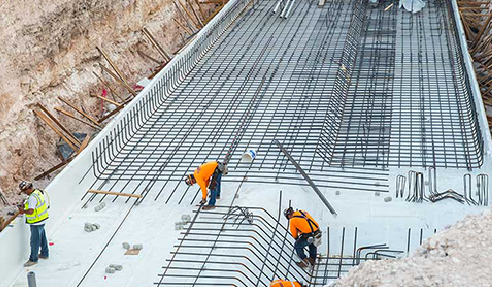Ensure Indoor Air Quality with Gas Vapour Barriers from GCP Soil Contamination and its Impact on Indoor Air Quality People can be exposed to soil contaminants in a number of ways, including:
Anyone building on sites with potential soil contamination needs to ensure that the chemicals in the soil don't infiltrate the structure and degrade the air quality (a phenomenon called vapour intrusion) and must remediate or remove soil that is contaminated. Several studies of indoor air quality in buildings on land with soil contaminated by volatile organic compounds indicated that the indoor air quality may contain significant levels of contaminants due to vapour intrusion. Vapour intrusionVapour intrusion can cause safety hazards and in some cases can cause acute health effects, according to the U.S. Environmental Protection Agency. Common vapour-forming chemicals include:
Indoor air quality problems create a wide range of health problems. In fact, the Institute of Medicine of the National Academies found that poor indoor air conditions cost tens of billions of dollars a year in lost worker productivity due to illnesses and allergic reactions. Health problems caused by soil pollutionSoil pollution can cause a wide range of health problems, including headaches, nausea, rashes, and more serious conditions such as liver and kidney damage as well as certain types of cancer. Common soil contaminantsFormer manufacturing facilities, industrial sites, parking lots, and waste disposal sites are common areas where soil contaminants are found. It is also not uncommon to find contaminants on land previously used for farming, due to excessive pesticide or fertiliser use. Building on contaminated sitesThe amount of contaminant in the soil can vary greatly, and this may be impacted by a number of factors, such as the type of soil. In some cases, contaminants may accumulate in the soil, causing a safety risk for children playing in the yard. In other cases, soil contaminants are spread through the air when excavation occurs. When building in areas with contaminated soil, it's especially important to have a soil test done and engage experts who can ensure proper remediation is done to protect future building tenants. Protecting against vapour intrusionThere are a number of remediation options available when remediating a contaminated site. One option is to use a gas vapour barrier, installed outside of the foundation of the structure, to prevent gas vapours from getting into the structure. The gas vapour barrier adheres to the basement slab and walls, encapsulating the entire below ground structure to keep gas (as well as water) out. Get to know more about gas vapour barriers by visiting www.gcpat.com.au today.
|
GCP Applied Technologies Profile 1800 855 525 14 Colebard St, West Archerfield, QLD, 4108
|


 SILCOR Liquid Waterproofing by GCP
SILCOR Liquid Waterproofing by GCP Leading Concrete Technology Supply by
Leading Concrete Technology Supply by Sustainable Cement Manufacturing with
Sustainable Cement Manufacturing with Sustainable Ready-mix Concrete Delivery
Sustainable Ready-mix Concrete Delivery Underground Injection Materials for Leak
Underground Injection Materials for Leak Commercial Flooring Moisture Barriers
Commercial Flooring Moisture Barriers Commercial Building Passive Fire
Commercial Building Passive Fire Construction Concrete Solutions from GCP
Construction Concrete Solutions from GCP Lower Emissions with Concrete
Lower Emissions with Concrete Perm-A-Barrier Advanced Weatherproofing
Perm-A-Barrier Advanced Weatherproofing Bridge Deck Waterproofing Membranes from
Bridge Deck Waterproofing Membranes from Facade Waterproofing and Air-Tightness
Facade Waterproofing and Air-Tightness Applying Liquid Waterproofing Membranes
Applying Liquid Waterproofing Membranes Pre-Applied Waterproofing Membranes at
Pre-Applied Waterproofing Membranes at Liquid Applied Waterproofing Frequently
Liquid Applied Waterproofing Frequently Complete Building Envelope Solutions
Complete Building Envelope Solutions Below-Ground Waterproofing Solutions
Below-Ground Waterproofing Solutions Waterproof Tanking Techniques with
Waterproof Tanking Techniques with Pre-Applied Waterproofing Membranes for
Pre-Applied Waterproofing Membranes for Tall Building Fire Protection,
Tall Building Fire Protection,
